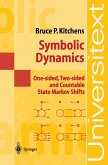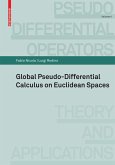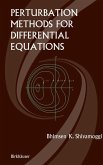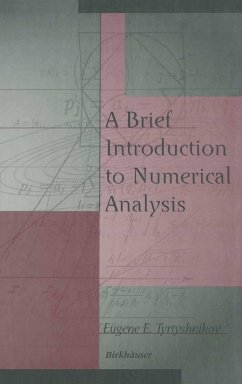Mathematics is playing an ever more important role in the physical and biological sciences, provoking a blurring of boundaries between scientific disciplines and a resurgence of interest in the modern as well as the cl- sical techniques of applied mathematics. This renewal of interest, both in research and teaching, has led to the establishment of the series: Texts in Applied Mathematics (TAM). The development of new courses is a natural consequence of a high level of excitement on the research frontier as newer techniques, such as numerical and symbolic computer systems, dynamical systems, and chaos mix with and reinforce the traditional methods of applied mathematics. Thus, the purpose of this textbook series is to meet the current and future needs of these advances and encourage the teaching of new courses. TAM will publish textbooks suitable for use in advanced undergraduate and beginning graduate courses, and will complement the Applied Ma- ematical Sciences (AMS) series, which will focus on advanced textbooks and research-level monographs. Preface "It is impossible to exaggerate the extent to which modern applied mathematics has been shaped and fueled by the g- eral availability of fast computers with large memories. Their impact on mathematics, both applied and pure, is comparable to the role of the telescopes in astronomy and microscopes in biology." - Peter Lax, Siam Rev. Vol. 31 No. 4 Congratulations! You have chosen to study partial differential equations.
From the reviews:
"Presents an introductory course to study partial differential equations especially from the computational point of view. ... At the end of each chapter the reader can find a very good selection of fine exercises or projects ... . The language of the book is simple and easy to read which will be highly appreciated by its readers. The book can be very useful for undergraduate and graduate students in mathematics and engineering." (Angela Handlovicová, Zentralblatt MATH, 1063, 2005)
"Presents an introductory course to study partial differential equations especially from the computational point of view. ... At the end of each chapter the reader can find a very good selection of fine exercises or projects ... . The language of the book is simple and easy to read which will be highly appreciated by its readers. The book can be very useful for undergraduate and graduate students in mathematics and engineering." (Angela Handlovicová, Zentralblatt MATH, 1063, 2005)
"In den gängigen Standard-Softwaresystemen der Produktionsplanung und -steuerung bzw. der Beschaffung und Materialwirtschaft wird dem Flexibilitätsgedanken im Rahmen der Losgrößenplanung bisher nur unzureichend Rechnung getragen...ein neues Losgrößenverfahren, das eine flexiblere Einbeziehung der betrieblichen Wirklichkeit ermöglicht.... Der neue Ansatz ermöglicht im Gegensatz zu den bekannten dynamischen Algorithmen das Anzeigen von Mehrfachlösungen sowie das Abrufen der nächstbesten Lösung und unterstützt eine interaktive Losgrößenbestimmung in Dialogform mit dem Disponenten... Im Hinblick auf den praktischen Einsatz des Verfahrens ist insbesondere die gesteigerte Flexibilität bei Einbeziehung der nachgelagerten Produktionsplanungs- und -steuerungsmodule hervorzuheben. Insgesamt lässt sich resümieren, dass es Francois mit seiner Arbeit gelungen ist, einen methodisch bemerkenswerten wissenschaftlichen Beitrag zur Losgrößenplanung zu leisten. Durch die sehr sorgfältige und anschauliche Darstellungsweise dürfte das Buch einen breiten Leserkreis ansprechen...bleibt zu hoffen, dass der Verfahrensansatz von Francois bei der Weiterentwicklung von Standard-Softwaresystemen der Produktionsplanung und -steuerung beziehungsweise der Beschaffung und Materialwirtschaft adäquat berücksichtigt wird, so dass die vom Autor aufgezeigten Mängel im Rahmen der Losgrößenplanung bei den bestehenden Systemen mittelfristig eliminiert werden." Dipl.-Kfm. K.-P.; Urban, zfbf 53 (März 2001)








